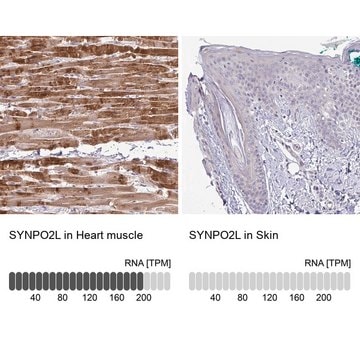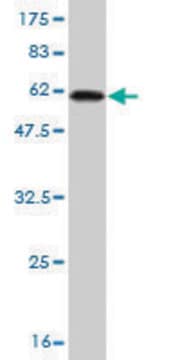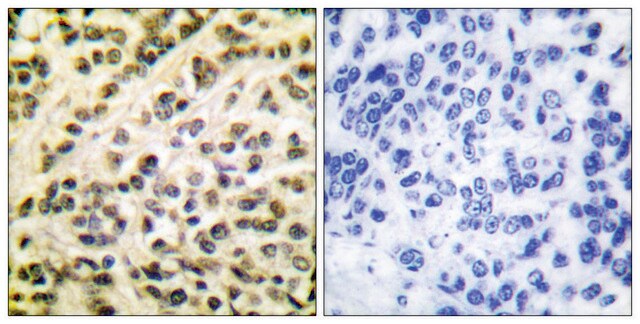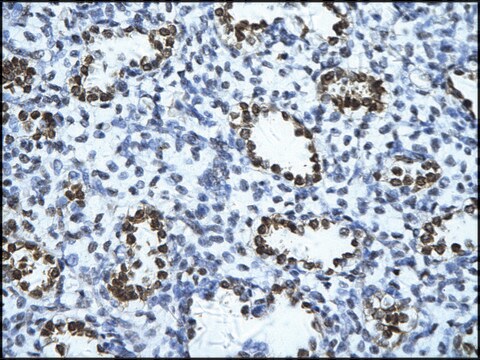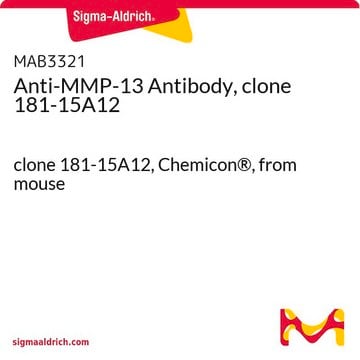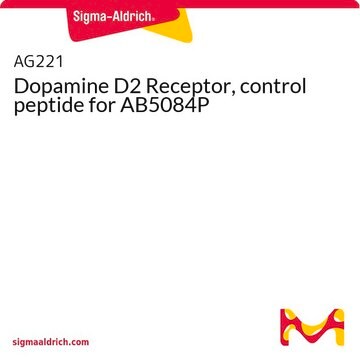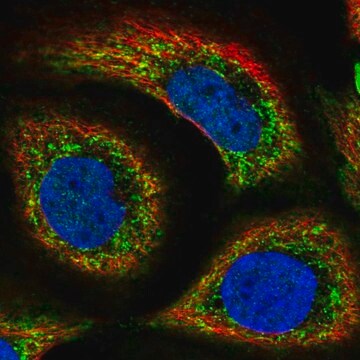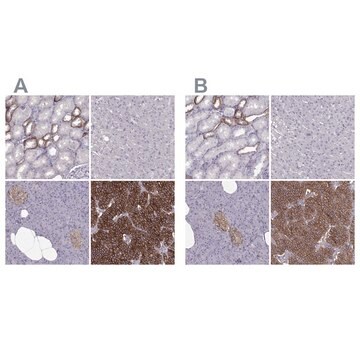HTS209RTA
Ready-to-Assay LPA 5/GPR92 Lysophospholipid Receptor Frozen Cells
Human
Sign Into View Organizational & Contract Pricing
All Photos(1)
About This Item
UNSPSC Code:
41106514
eCl@ss:
32011203
NACRES:
NA.76
Recommended Products
product name
Ready-to-Assay LPA 5/GPR92 Lysophospholipid Receptor Frozen Cells,
biological source
human
manufacturer/tradename
Ready-to-Assay
technique(s)
calcium flux assay: suitable
NCBI accession no.
detection method
fluorometric
General description
Millipore′s Ready-to-Assay GPCR frozen cells are designed for simple, rapid calcium assays with no requirement for intensive cell culturing. Millipore has optimized the freezing conditions to provide cells with high viability and functionality post-thaw. The user simply thaws the cells and resuspends them in media, dispenses cell suspension into assay plates and, following over night recovery, assays for calcium response.
Lysophosphatidic acid (LPA) is a lysophospholipid produced by activated platelets that inhibits adenylate cyclase and stimulates DNA synthesis, changes in cell morphology, and increases in intracellular calcium in a variety of cultured mammalian cells. A growing family of GPCRs mediates the biological effects of LPA. The first LPA receptors described, LPA1-3, share relatively high sequence similarity and are related to the sphingosine 1-phosphate receptors S1P1-5 (Contos et al., 2000). Two more recently characterized LPA receptors, LPA4 and LPA5, are related to each other but are more distantly related to LPA1-3. LPA5, originally known as GPR92, mediates LPA-induced cytoskeletal changes, intracellular calcium flux and increased cAMP by coupling to G12/13, Gq, and Gs. (Lee et al., 2006). In addition to binding LPA, LPA5 is also activated by several other lipid-derived molecules, the most potent of which is farnesyl pyrophosphate (Oh et al., 2008). GPR92 is expressed in several tissues, most prominently in the CD8+ intraepithelial lymphocytes of the gastrointestinal tract (Kotarsky et al., 2006). Millipore′s cloned human LPA5-expressing cell line is made in the Chem-1 host, which supports high levels of recombinant LPA5 expression on the cell surface and contains high levels of the promiscuous G protein Gα15 to couple the receptor to the calcium signaling pathway. Thus, the cell line is an ideal tool for screening for agonists, antagonists and modulators at LPA5.
Lysophosphatidic acid (LPA) is a lysophospholipid produced by activated platelets that inhibits adenylate cyclase and stimulates DNA synthesis, changes in cell morphology, and increases in intracellular calcium in a variety of cultured mammalian cells. A growing family of GPCRs mediates the biological effects of LPA. The first LPA receptors described, LPA1-3, share relatively high sequence similarity and are related to the sphingosine 1-phosphate receptors S1P1-5 (Contos et al., 2000). Two more recently characterized LPA receptors, LPA4 and LPA5, are related to each other but are more distantly related to LPA1-3. LPA5, originally known as GPR92, mediates LPA-induced cytoskeletal changes, intracellular calcium flux and increased cAMP by coupling to G12/13, Gq, and Gs. (Lee et al., 2006). In addition to binding LPA, LPA5 is also activated by several other lipid-derived molecules, the most potent of which is farnesyl pyrophosphate (Oh et al., 2008). GPR92 is expressed in several tissues, most prominently in the CD8+ intraepithelial lymphocytes of the gastrointestinal tract (Kotarsky et al., 2006). Millipore′s cloned human LPA5-expressing cell line is made in the Chem-1 host, which supports high levels of recombinant LPA5 expression on the cell surface and contains high levels of the promiscuous G protein Gα15 to couple the receptor to the calcium signaling pathway. Thus, the cell line is an ideal tool for screening for agonists, antagonists and modulators at LPA5.
Cell Line Description
- GPCR Cell Lines
- Host cells: Chem-1
Application
Human LPA5 / GPR92 GPCR frozen cells for Calcium Flux FLIPR Assays.
Biochem/physiol Actions
- GPCR Class: A
- Protein Target: LPA5 / GPR92
- Target Sub-Family: Lysophospholipid
Components
Pack contains 2 vials of mycoplasma-free cells, 1 ml per vial.
Fifty (50) mL of Media Component.
Fifty (50) mL of Media Component.
Disclaimer
This product contains genetically modified organisms (GMO).
Within the EU GMOs are regulated by Directives 2001/18/EC and 2009/41/EC of the European Parliament and of the Council and their national implementation in the member States respectively.
Storage Class Code
10 - Combustible liquids
WGK
WGK 1
Flash Point(F)
Not applicable
Flash Point(C)
Not applicable
Certificates of Analysis (COA)
Search for Certificates of Analysis (COA) by entering the products Lot/Batch Number. Lot and Batch Numbers can be found on a product’s label following the words ‘Lot’ or ‘Batch’.
Already Own This Product?
Find documentation for the products that you have recently purchased in the Document Library.
Our team of scientists has experience in all areas of research including Life Science, Material Science, Chemical Synthesis, Chromatography, Analytical and many others.
Contact Technical Service
